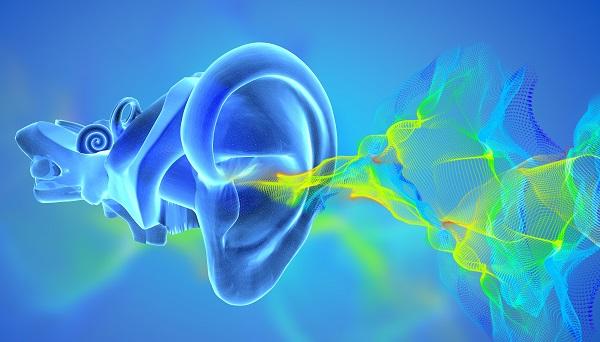
Hearing loss in adults: assessment and management
NICE NG98 June 2018
NICE NG98 June 2018
This guideline covers aspects of assessing and managing hearing loss. It aims to improve the quality of life for adults with hearing loss by advising healthcare staff on assessing hearing difficulties, managing earwax and referring people for audiological or specialist assessment and management. Much of this guideline relates to the management of people with hearing loss after referral, so this summary covers essential areas for general practice nurses, notably managing earwax and when to refer.
Hearing loss is a major public health issue affecting about 9 million people in England. Because age-related hearing loss is the single biggest cause of hearing loss, it is estimated that by 2035, around 13 million people – a fifth of the population – will be affected.
Hearing loss has a significant impact on individuals, leading to difficulties in communicating at work and home, and can affect family relationships, employment and education, and independence. It can cause low self-esteem, feelings of isolation and impair quality of life. Hearing loss doubles the risk of depression and increases the risk of anxiety. There is an association between hearing loss, cognitive performance and dementia.
In the majority, hearing loss is bilateral and slowly progressive. On average there is a 10-year delay in people aged 55 to 74 seeking help. Studies have shown that between 30% and 45% of adults who report hearing problems to their GP are not referred to NHS hearing services, and in some cases, advised to wait until their symptoms are more severe. Only 1 in 3 adults who would benefit from hearing aids has had them prescribed and fitted.
THE RECOMMENDATIONS
ASSESSMENT
For adults who present for the first time with hearing difficulties or in whom you suspect hearing difficulties:
- Exclude impacted wax and acute infections such as otitis externa, then
- Arrange audiological assessment
- Refer for additional diagnostic assessment if needed
REMOVING EARWAX
Offer to remove earwax for adults in primary care if the earwax is contributing to hearing loss or other symptoms, or needs to be removed in order to examine the ear
DO NOT offer manual syringing to remove earwax
Consider using an electronic irrigator, microsuction or another method of removal, such as manual removal using a probe, if:
- The practitioner has training and expertise in using the method, and
- Is aware of any contraindications to the method
- The correct equipment is available.
When performing ear irrigation:
- Use pre-treatment wax softeners, either immediately before or for up to 5 days before
- If irrigation is unsuccessful, repeat use of wax softeners, or
- Instil water into the ear canal 15 minutes before repeating ear irrigation
- If irrigation is unsuccessful on second attempt, refer the patient to a specialist ear care service or ENT for removal of earwax
Advise patients not to remove earwax or clean their ears by inserting small objects such as cotton buds into the ear canal. Explain that this could damage the ear canal and eardrum, and push wax further down into the ear.
REFERRAL
Sudden or rapid onset of hearing loss
Refer adults with sudden onset or rapid worsening of hearing loss in one or both ears, which is not explained by external or middle ear causes:
- If the hearing loss developed suddenly (over 3 days or less) within the past 30 days, refer immediately to an ear nose and throat (ENT) service or emergency department, to be seen within 24 hours
- If hearing loss developed suddenly more than 30 days ago, or worsened rapidly over a period of 4 – 90 days, refer urgently to ENT or audiovestibular medicine service to be seen within 2 weeks
Refer immediately:
- Acquired unilateral hearing loss and altered sensation or facial droop on the same side
- If immunocompromised and has otalgia with otorrhoea that has not responded to treatment
Consider urgent referral (to be seen within 2 weeks) to ENT for adults of Chinese or south-east Asian family origin who have hearing loss and middle ear effusion not associated with upper respiratory tract infection (URTI)
Consider referring to ENT, audiovestibular medicine or specialist audiology service adults who present with hearing loss that is not explained by acute external or middle ear causes and:
- Unilateral or asymmetric hearing loss
- Fluctuating hearing loss not associated with URTI
- Hyperacusis (intolerance to everyday sounds causing significant distress)
- Persistent tinnitus that is unilateral, pulsatile, has significantly changed in nature or is causing distress
- Vertigo that is unresolved or recurrent
- Hearing loss that is not age-related
Consider referring to ENT if, after initial treatment of earwax or acute infection, there is:
- Partial or complete obstruction of the external auditory canal that prevents full examination of the eardrum
- Pain affecting either ear lasting ≥1 week unresponsive to first line treatment
- Discharge (other than wax) from either ear that has nor resolved, responded to prescribed treatment or recurs
- Abnormal appearance of outer ear or eardrum, such as inflammation, perforation, swelling or blood in the ear canal
DEMENTIA
In people with diagnosed or suspected dementia or mild cognitive impairment, hearing loss may be a comorbid condition. Consider referral to audiology for a hearing assessment. If not previously diagnosed with hearing loss, consider referral every 2 years.
People with a diagnosed learning disability should be referred for a hearing assessment when they transfer from child to adult services, then every 2 years.
INFORMATION AND SUPPORT
Take account of the person’s ability to access services and their personal preferences when offering appointments
Take measures, such as reducing background noise, to ensure that the clinical environment is conducive to communication for people with hearing loss, particularly in group settings such as waiting rooms and clinics
Establish the most effective way of communicating with each person, including the use of hearing loop systems and other assistive listening devices
Ensure staff are trained and have demonstrated competence in communication skills for people with hearing loss
Encourage people with hearing loss to give feedback about the health services they receive, and respond to their feedback.
NICE NG98. Hearing loss in adults: assessment and management, 2018-06-21 https://www.nice.org.uk/guidance/ng98
